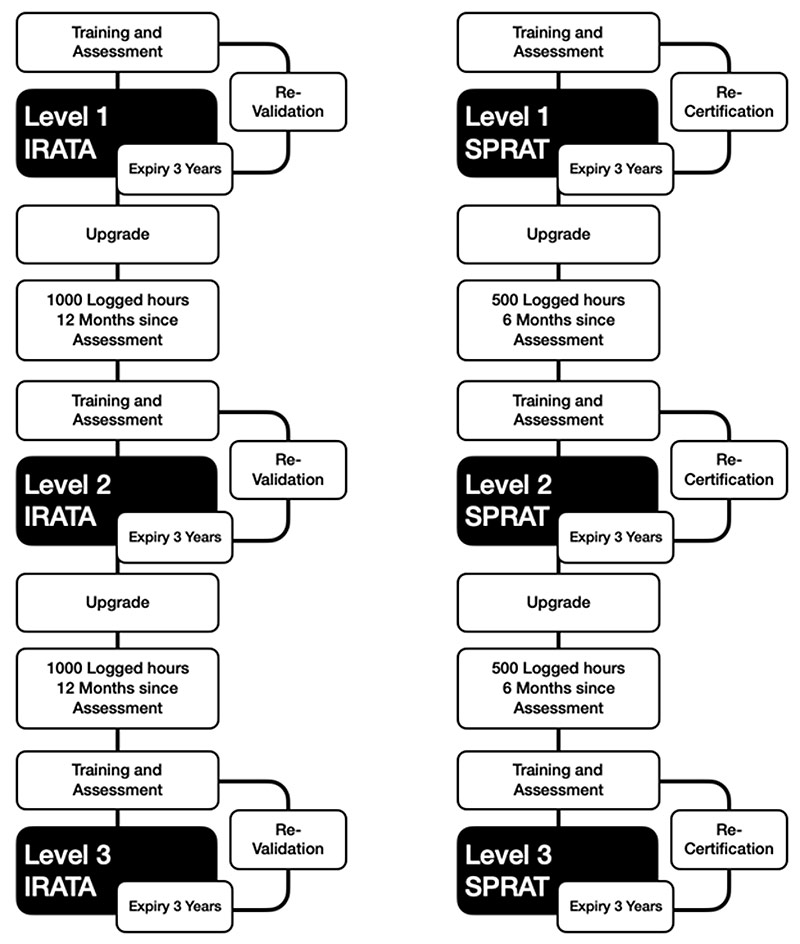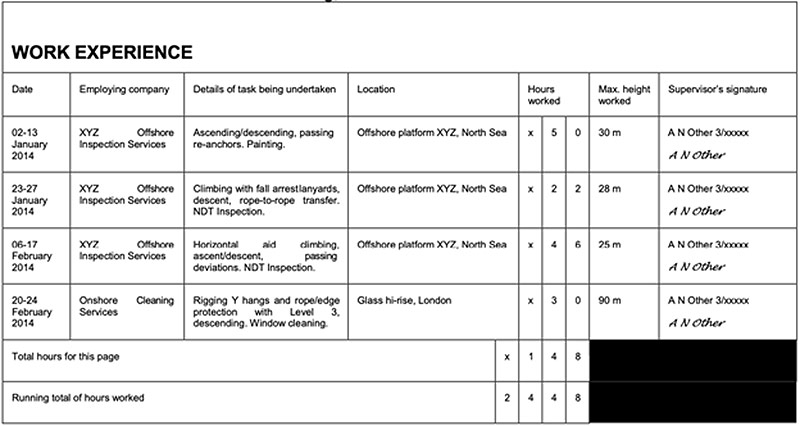| Type Of Equipment |
Standards |
| Anchors |
CAN/CSA Z259.15-12 Anchorage Connectors |
| CAN/CSA Z271-10 Safety code for suspended platforms |
| EN 795:2012 Personal fall protection equipment — Anchor devices |
| Connectors |
ANSI/ASSE 359.12-2009 Connecting Components for Personal Fall Arrest Systems |
| CSA Z259.12-11 Connecting components for personal fall arrest systems |
| EN 362:2004 Personal protective equipment against falls from a height — Connectors |
| EN 12275:2013 Mountaineering equipment — Connectors — Safety requirements and test methods |
| UIAA 121 Mountaineering and Climbing Equipment — Connectors/Karabiners |
| Energy Absorbers |
EN 355:2002 Personal protective equipment against falls from height — Energy absorbers |
| Harnesses |
CAN/CSA Z259.10-12 Full body harnesses |
| EN 361:2002 Personal protective equipment against falls from a height — Full body harnesses |
| EN 813:2008 Personal fall protection equipment — Sit harnesses |
| EN 12277:2007 Mountaineering equipment — Harnesses — Safety requirements and test methods |
| UIAA 105 Mountaineering and Climbing Equipment — Harnesses |
| Lanyards |
EN 354:2010 Personal fall protection equipment — Lanyards |
| Rope |
Cordage Institute CI 1801-07 Low Stretch and Static Kernmantle Life Safety Rope |
| EN 892:2012 Mountaineering equipment — Dynamic mountaineering ropes — Safety requirements and test methods |
| EN 1891:1998 Personal protective equipment for the prevention of falls from a height — Low stretch kernmantel ropes |
| NFPA 1983 Standard on Life Safety Rope and Equipment for Emergency Services, 2012 Edition |
| UIAA 101 Mountaineering and Climbing Equipment — Dynamic |
| UIAA 107 Mountaineering and Climbing Equipment — Low Stretch Ropes |
| Rope adjustment devices, including ascenders, backup devices, descenders, fall arresters and rope clamps |
CAN/CSA Z259.2.3-12 Descent devices |
| EN 341:2011 Personal fall protection equipment — Descender devices for rescue |
| EN 353-2:2002 Personal protective equipment against falls from a height — Part 2: Guided type fall arresters including a flexible anchor line |
| EN 567:2013 Mountaineering equipment — Rope clamps — Safety requirements and test methods |
| EN 12841:2006 Personal fall protection equipment — Rope access systems — Rope adjustment devices |
| UIAA 126 Mountaineering and Climbing Equipment — Rope Clamps |


